-

Nov
21
A Synopsis of the 2024 International Summit on Societal Role of Meat and Livestock
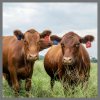
Members of the ASAS Public Policy Committee attended the Societal Role of Meat and Livestock - Denver Summit 2024. The following brief highlights the purpose, activities, significance, and proposed outcomes of the summit.
Read more
-

Nov
21
CAST Report on the Potential for U.S. Agriculture to be Greenhouse Gas Negative
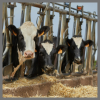
The ASAS Public Policy Committee continually looks to share information which increases awareness of strategies and solutions for a more sustainable animal agricultural future. A recently released report “Potential for U.S. Agriculture to Be Greenhouse Gas Negative", assembled by the Council for Agricultural Science and Technology (CAST) in partnership with U.S. Farmers & Ranchers in Action (USFRA), examines strategies for reducing greenhouse gas (GHG) emissions within U.S. agriculture, particularly focusing on animal production systems. The report outlines how combining reduced GHG emissions from some agricultural activities with increased carbon sequestration in others could achieve GHG-negative agriculture. It also describes the research needed to help accomplish it.
Read more
-

Nov
20
The Giving Herd - ASAS Foundation Newsletter - November 2024

The November Edition of The Giving Herd, an ASAS Foundation Newsletter.
Read more
-

Nov
14
Bob and Grace Wettemann - Their Story and ASAS Journey

Read more
-

Nov
14
Interpretive Summary: Trace mineral sources influence in vitro fermentation characteristics and trace mineral solubility
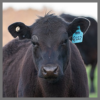
Copper, Mn, and Zn are essential trace minerals (TM) supplemented in cattle to prevent TM deficiencies. Supplemental TM sources can differ in solubility within the digestive tract of cattle, which can impact rumen fermentation and availability for absorption from the small intestine.
Read more
-

Nov
14
Interpretive Summary: Coated oregano essential oil and cinnamaldehyde compounds supplementation improves growth performance, enhances immune responses, and inhibits cecal Escherichia coli proliferation of broilers

The use of antibiotic growth promoters (AGPs) has been restricted or even prohibited around the world, which brings serious challenges to the health development of the poultry industry. Some plant essential oils and their constituent bioactive compounds have received increasing attention in antibiotic-free diets thanks to their antibacterial and anti-inflammatory properties, and lack of environmental residue.
Read more
-

Nov
14
Interpretive Summary: Dietary glycerides of valerate ameliorate diarrhea and impact intestinal physiology and serum biomarkers in weaned piglets infected with enterotoxigenic Escherichia coli F18
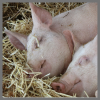
Postweaning diarrhea is a major challenge on commercial pig farms. The current study aimed to determine the efficacy of dietary valerate glycerides supplemented to weaned piglets under enterotoxigenic E. coli (ETEC) F18 infection conditions.
Read more
-

Nov
14
Interpretive Summary: Transforming estimated breeding values from observed to probability scale: how to make categorical data analyses more efficient

Calving ease is recorded as a binary trait, easy or difficult calving. Predicting breeding values as the probability of expressing easy calving requires using threshold models, a nonlinear statistical methodology with intensive computing requirements emphasized nowadays with big datasets.
Read more
-

Nov
14
Interpretive Summary: Exploring the impact of fatty acid composition on carcass and meat quality in Bos taurus indicus influenced cattle

The fat composition and mineral content of beef influences both its taste and nutritional value. This study seeks to understand the relationship between meat quality and the nutritional value of beef from Brangus cattle. Animals varied greatly in their levels of essential omega-6 and monounsaturated fat.
Read more
-

Nov
14
Interpretive Summary: Effects of chicken slurry inclusion on apparent total tract macronutrient digestibility, palatability, and fecal characteristics, microbiota, and metabolites of healthy adult dogs

Premium pet foods often include chicken slurry, which is thought to be superior to chicken meal but is not well-tested. This study aimed to determine how chicken slurry inclusion level affected the apparent total tract digestibility (ATTD) and palatability of extruded dog foods, and gastrointestinal health indices of dogs.
Read more
-

Nov
14
Interpretive Summary: Is heat stress a growing problem for dairy cattle husbandry in the temperate regions? A case study of Baden-Württemberg in Germany

Heat stress and its effects on milk production are commonly related to the effects of climate change. In the temperate regions, cold winters and mild summers have historically provided some buffering effect and maintained milk production. However, a measurable effect of heat stress on milk production was found, with its severity and period dependent on microclimates and the rate of increase dependent on climate change.
Read more
-

Nov
07
Interpretive Summary: Dietary fiber and weaning age affect stress and immune markers in saliva of sows and their offspring
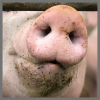
This study explored how diet, specifically dietary fiber, and the timing of weaning affect the wellbeing of pigs. The sows and their offspring were fed two types of fiber: low-fermentable hay and high-fermentable sugar beet pulp, in either fine or coarse form. Conventional weaning with late weaning of piglets was also compared.
Read more
-

Nov
07
Interpretive Summary: A study of solely used phytase or in combination with multi-carbohydrase on growth performance along with tibia mineralization, and carcass traits in broilers fed nutrient-deficient diets
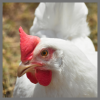
Poultry encounter challenges in synthesizing endogenous enzymes to completely degrade antinutritional factors, including phytic acid (PA) and nonstarch polysaccharides (NSP). These exogenous enzymes are present in plant-based feed ingredients, which encapsulate nutrients and adversely affect their digestion in the gastrointestinal tract (GIT).
Read more
-

Nov
07
Interpretive Summary: Structural equation models to infer relationships between energy-related blood metabolites and milk daily energy output in Holstein cows
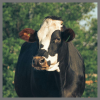
Dairy cows face significant metabolic challenges during the different phases of the production cycle. One of their primary issues revolves around meeting the elevated energy demands, encompassing essential maintenance requirements and the energy required for milk production.
Read more
-

Nov
07
Interpretive Summary: Integration of multi-omics reveals the important role of the BBS10 gene in reproduction

This study investigates the relationship between genes and metabolites in sheep ovaries and blood. The analysis revealed that glutathione pathways are active in both the ovary and blood, which indicates a possible exchange of metabolites between these 2 tissues.
Read more
-

Nov
07
Interpretive Summary: Effects of supplementation of live and heat-treated Bifidobacterium animalis subspecies lactis CECT 8145 on glycemic and insulinemic response, fecal microbiota...

Probiotics, live microorganisms, postbiotics, metabolites of probiotics, or the components that result from probiotic activity, help to maintain a healthy gut environment and are beneficial for general health and well-being. Minimal research has been conducted on the effects of probiotics and postbiotics on canine health.
Read more
-

Nov
07
Interpretive Summary: Evaluation of corn fermented protein on the fecal microbiome of cats

Specific components of yeast may affect gut microbiota and health. Corn fermented protein (CFP) is a co-product from ethanol production which contains approximately 20% to 25% yeast. In this work, 11 cats were fed diets containing no yeast (T1) and either 3.5% brewer’s dried yeast (T2), 2.5% brewer’s dried yeast plus 17.5% distillers dried grains with solubles (T3), or 17.5% CFP (T4).
Read more
-

Oct
31
Washington Roundup - October 2024

Octobers edition of Washington Roundup includes three summaries: Pressure Mounting on Agriculture Committee Leaders to Complete Farm Bill, Draft Dietary Guidelines Raise Meat Industry Concerns, and FDA Publishes 2023 Summary Report on Antimicrobials Sold or Distributed for Use in Food-Producing Animals.
Read more
-

Oct
31
Interpretive Summary: Science policy - solving “real-world problems” - ASAS PPC

A recent Nature career feature article (DePaul, 2024) focused on the roles of science policy advisors, noting “Many researchers think that science policy is a total snoozefest.” Four science policy specialists, from Spain, Canada, United States, and India, shared their insights for the article.
Read more
-

Oct
31
Interpretive Summary: Teresa A. Davis Elected as a New Member of The National Academy of Medicine

Teresa A. Davis, PhD, ASAS Fellow, former ASAS President, and past chair of the ASAS Public Policy Committee was elected as a new member of The National Academy of Medicine (NAM). The academy announced the election of 90 regular members and 10 international members during its annual meeting on October 21, 2024.
Read more
 NovA Synopsis of the 2024 International Summit on Societal Role of Meat and Livestock
NovA Synopsis of the 2024 International Summit on Societal Role of Meat and Livestock Members of the ASAS Public Policy Committee attended the Societal Role of Meat and Livestock - Denver Summit 2024. The following brief highlights the purpose, activities, significance, and proposed outcomes of the summit.
Members of the ASAS Public Policy Committee attended the Societal Role of Meat and Livestock - Denver Summit 2024. The following brief highlights the purpose, activities, significance, and proposed outcomes of the summit. NovCAST Report on the Potential for U.S. Agriculture to be Greenhouse Gas Negative
NovCAST Report on the Potential for U.S. Agriculture to be Greenhouse Gas Negative The ASAS Public Policy Committee continually looks to share information which increases awareness of strategies and solutions for a more sustainable animal agricultural future. A recently released report “Potential for U.S. Agriculture to Be Greenhouse Gas Negative", assembled by the Council for Agricultural Science and Technology (CAST) in partnership with U.S. Farmers & Ranchers in Action (USFRA), examines strategies for reducing greenhouse gas (GHG) emissions within U.S. agriculture, particularly focusing on animal production systems. The report outlines how combining reduced GHG emissions from some agricultural activities with increased carbon sequestration in others could achieve GHG-negative agriculture. It also describes the research needed to help accomplish it.
The ASAS Public Policy Committee continually looks to share information which increases awareness of strategies and solutions for a more sustainable animal agricultural future. A recently released report “Potential for U.S. Agriculture to Be Greenhouse Gas Negative", assembled by the Council for Agricultural Science and Technology (CAST) in partnership with U.S. Farmers & Ranchers in Action (USFRA), examines strategies for reducing greenhouse gas (GHG) emissions within U.S. agriculture, particularly focusing on animal production systems. The report outlines how combining reduced GHG emissions from some agricultural activities with increased carbon sequestration in others could achieve GHG-negative agriculture. It also describes the research needed to help accomplish it. NovThe Giving Herd - ASAS Foundation Newsletter - November 2024
NovThe Giving Herd - ASAS Foundation Newsletter - November 2024 The November Edition of The Giving Herd, an ASAS Foundation Newsletter.
The November Edition of The Giving Herd, an ASAS Foundation Newsletter. NovBob and Grace Wettemann - Their Story and ASAS Journey
NovBob and Grace Wettemann - Their Story and ASAS Journey
 NovInterpretive Summary: Trace mineral sources influence in vitro fermentation characteristics and trace mineral solubility
NovInterpretive Summary: Trace mineral sources influence in vitro fermentation characteristics and trace mineral solubility Copper, Mn, and Zn are essential trace minerals (TM) supplemented in cattle to prevent TM deficiencies. Supplemental TM sources can differ in solubility within the digestive tract of cattle, which can impact rumen fermentation and availability for absorption from the small intestine.
Copper, Mn, and Zn are essential trace minerals (TM) supplemented in cattle to prevent TM deficiencies. Supplemental TM sources can differ in solubility within the digestive tract of cattle, which can impact rumen fermentation and availability for absorption from the small intestine. NovInterpretive Summary: Coated oregano essential oil and cinnamaldehyde compounds supplementation improves growth performance, enhances immune responses, and inhibits cecal Escherichia coli proliferation of broilers
NovInterpretive Summary: Coated oregano essential oil and cinnamaldehyde compounds supplementation improves growth performance, enhances immune responses, and inhibits cecal Escherichia coli proliferation of broilers The use of antibiotic growth promoters (AGPs) has been restricted or even prohibited around the world, which brings serious challenges to the health development of the poultry industry. Some plant essential oils and their constituent bioactive compounds have received increasing attention in antibiotic-free diets thanks to their antibacterial and anti-inflammatory properties, and lack of environmental residue.
The use of antibiotic growth promoters (AGPs) has been restricted or even prohibited around the world, which brings serious challenges to the health development of the poultry industry. Some plant essential oils and their constituent bioactive compounds have received increasing attention in antibiotic-free diets thanks to their antibacterial and anti-inflammatory properties, and lack of environmental residue. NovInterpretive Summary: Dietary glycerides of valerate ameliorate diarrhea and impact intestinal physiology and serum biomarkers in weaned piglets infected with enterotoxigenic Escherichia coli F18
NovInterpretive Summary: Dietary glycerides of valerate ameliorate diarrhea and impact intestinal physiology and serum biomarkers in weaned piglets infected with enterotoxigenic Escherichia coli F18 Postweaning diarrhea is a major challenge on commercial pig farms. The current study aimed to determine the efficacy of dietary valerate glycerides supplemented to weaned piglets under enterotoxigenic E. coli (ETEC) F18 infection conditions.
Postweaning diarrhea is a major challenge on commercial pig farms. The current study aimed to determine the efficacy of dietary valerate glycerides supplemented to weaned piglets under enterotoxigenic E. coli (ETEC) F18 infection conditions. NovInterpretive Summary: Transforming estimated breeding values from observed to probability scale: how to make categorical data analyses more efficient
NovInterpretive Summary: Transforming estimated breeding values from observed to probability scale: how to make categorical data analyses more efficient Calving ease is recorded as a binary trait, easy or difficult calving. Predicting breeding values as the probability of expressing easy calving requires using threshold models, a nonlinear statistical methodology with intensive computing requirements emphasized nowadays with big datasets.
Calving ease is recorded as a binary trait, easy or difficult calving. Predicting breeding values as the probability of expressing easy calving requires using threshold models, a nonlinear statistical methodology with intensive computing requirements emphasized nowadays with big datasets. NovInterpretive Summary: Exploring the impact of fatty acid composition on carcass and meat quality in Bos taurus indicus influenced cattle
NovInterpretive Summary: Exploring the impact of fatty acid composition on carcass and meat quality in Bos taurus indicus influenced cattle The fat composition and mineral content of beef influences both its taste and nutritional value. This study seeks to understand the relationship between meat quality and the nutritional value of beef from Brangus cattle. Animals varied greatly in their levels of essential omega-6 and monounsaturated fat.
The fat composition and mineral content of beef influences both its taste and nutritional value. This study seeks to understand the relationship between meat quality and the nutritional value of beef from Brangus cattle. Animals varied greatly in their levels of essential omega-6 and monounsaturated fat. NovInterpretive Summary: Effects of chicken slurry inclusion on apparent total tract macronutrient digestibility, palatability, and fecal characteristics, microbiota, and metabolites of healthy adult dogs
NovInterpretive Summary: Effects of chicken slurry inclusion on apparent total tract macronutrient digestibility, palatability, and fecal characteristics, microbiota, and metabolites of healthy adult dogs Premium pet foods often include chicken slurry, which is thought to be superior to chicken meal but is not well-tested. This study aimed to determine how chicken slurry inclusion level affected the apparent total tract digestibility (ATTD) and palatability of extruded dog foods, and gastrointestinal health indices of dogs.
Premium pet foods often include chicken slurry, which is thought to be superior to chicken meal but is not well-tested. This study aimed to determine how chicken slurry inclusion level affected the apparent total tract digestibility (ATTD) and palatability of extruded dog foods, and gastrointestinal health indices of dogs. NovInterpretive Summary: Is heat stress a growing problem for dairy cattle husbandry in the temperate regions? A case study of Baden-Württemberg in Germany
NovInterpretive Summary: Is heat stress a growing problem for dairy cattle husbandry in the temperate regions? A case study of Baden-Württemberg in Germany Heat stress and its effects on milk production are commonly related to the effects of climate change. In the temperate regions, cold winters and mild summers have historically provided some buffering effect and maintained milk production. However, a measurable effect of heat stress on milk production was found, with its severity and period dependent on microclimates and the rate of increase dependent on climate change.
Heat stress and its effects on milk production are commonly related to the effects of climate change. In the temperate regions, cold winters and mild summers have historically provided some buffering effect and maintained milk production. However, a measurable effect of heat stress on milk production was found, with its severity and period dependent on microclimates and the rate of increase dependent on climate change. NovInterpretive Summary: Dietary fiber and weaning age affect stress and immune markers in saliva of sows and their offspring
NovInterpretive Summary: Dietary fiber and weaning age affect stress and immune markers in saliva of sows and their offspring This study explored how diet, specifically dietary fiber, and the timing of weaning affect the wellbeing of pigs. The sows and their offspring were fed two types of fiber: low-fermentable hay and high-fermentable sugar beet pulp, in either fine or coarse form. Conventional weaning with late weaning of piglets was also compared.
This study explored how diet, specifically dietary fiber, and the timing of weaning affect the wellbeing of pigs. The sows and their offspring were fed two types of fiber: low-fermentable hay and high-fermentable sugar beet pulp, in either fine or coarse form. Conventional weaning with late weaning of piglets was also compared. NovInterpretive Summary: A study of solely used phytase or in combination with multi-carbohydrase on growth performance along with tibia mineralization, and carcass traits in broilers fed nutrient-deficient diets
NovInterpretive Summary: A study of solely used phytase or in combination with multi-carbohydrase on growth performance along with tibia mineralization, and carcass traits in broilers fed nutrient-deficient diets Poultry encounter challenges in synthesizing endogenous enzymes to completely degrade antinutritional factors, including phytic acid (PA) and nonstarch polysaccharides (NSP). These exogenous enzymes are present in plant-based feed ingredients, which encapsulate nutrients and adversely affect their digestion in the gastrointestinal tract (GIT).
Poultry encounter challenges in synthesizing endogenous enzymes to completely degrade antinutritional factors, including phytic acid (PA) and nonstarch polysaccharides (NSP). These exogenous enzymes are present in plant-based feed ingredients, which encapsulate nutrients and adversely affect their digestion in the gastrointestinal tract (GIT). NovInterpretive Summary: Structural equation models to infer relationships between energy-related blood metabolites and milk daily energy output in Holstein cows
NovInterpretive Summary: Structural equation models to infer relationships between energy-related blood metabolites and milk daily energy output in Holstein cows Dairy cows face significant metabolic challenges during the different phases of the production cycle. One of their primary issues revolves around meeting the elevated energy demands, encompassing essential maintenance requirements and the energy required for milk production.
Dairy cows face significant metabolic challenges during the different phases of the production cycle. One of their primary issues revolves around meeting the elevated energy demands, encompassing essential maintenance requirements and the energy required for milk production. NovInterpretive Summary: Integration of multi-omics reveals the important role of the BBS10 gene in reproduction
NovInterpretive Summary: Integration of multi-omics reveals the important role of the BBS10 gene in reproduction This study investigates the relationship between genes and metabolites in sheep ovaries and blood. The analysis revealed that glutathione pathways are active in both the ovary and blood, which indicates a possible exchange of metabolites between these 2 tissues.
This study investigates the relationship between genes and metabolites in sheep ovaries and blood. The analysis revealed that glutathione pathways are active in both the ovary and blood, which indicates a possible exchange of metabolites between these 2 tissues. NovInterpretive Summary: Effects of supplementation of live and heat-treated Bifidobacterium animalis subspecies lactis CECT 8145 on glycemic and insulinemic response, fecal microbiota...
NovInterpretive Summary: Effects of supplementation of live and heat-treated Bifidobacterium animalis subspecies lactis CECT 8145 on glycemic and insulinemic response, fecal microbiota... Probiotics, live microorganisms, postbiotics, metabolites of probiotics, or the components that result from probiotic activity, help to maintain a healthy gut environment and are beneficial for general health and well-being. Minimal research has been conducted on the effects of probiotics and postbiotics on canine health.
Probiotics, live microorganisms, postbiotics, metabolites of probiotics, or the components that result from probiotic activity, help to maintain a healthy gut environment and are beneficial for general health and well-being. Minimal research has been conducted on the effects of probiotics and postbiotics on canine health. NovInterpretive Summary: Evaluation of corn fermented protein on the fecal microbiome of cats
NovInterpretive Summary: Evaluation of corn fermented protein on the fecal microbiome of cats Specific components of yeast may affect gut microbiota and health. Corn fermented protein (CFP) is a co-product from ethanol production which contains approximately 20% to 25% yeast. In this work, 11 cats were fed diets containing no yeast (T1) and either 3.5% brewer’s dried yeast (T2), 2.5% brewer’s dried yeast plus 17.5% distillers dried grains with solubles (T3), or 17.5% CFP (T4).
Specific components of yeast may affect gut microbiota and health. Corn fermented protein (CFP) is a co-product from ethanol production which contains approximately 20% to 25% yeast. In this work, 11 cats were fed diets containing no yeast (T1) and either 3.5% brewer’s dried yeast (T2), 2.5% brewer’s dried yeast plus 17.5% distillers dried grains with solubles (T3), or 17.5% CFP (T4). OctWashington Roundup - October 2024
OctWashington Roundup - October 2024 Octobers edition of Washington Roundup includes three summaries: Pressure Mounting on Agriculture Committee Leaders to Complete Farm Bill, Draft Dietary Guidelines Raise Meat Industry Concerns, and FDA Publishes 2023 Summary Report on Antimicrobials Sold or Distributed for Use in Food-Producing Animals.
Octobers edition of Washington Roundup includes three summaries: Pressure Mounting on Agriculture Committee Leaders to Complete Farm Bill, Draft Dietary Guidelines Raise Meat Industry Concerns, and FDA Publishes 2023 Summary Report on Antimicrobials Sold or Distributed for Use in Food-Producing Animals. OctInterpretive Summary: Science policy - solving “real-world problems” - ASAS PPC
OctInterpretive Summary: Science policy - solving “real-world problems” - ASAS PPC A recent Nature career feature article (DePaul, 2024) focused on the roles of science policy advisors, noting “Many researchers think that science policy is a total snoozefest.” Four science policy specialists, from Spain, Canada, United States, and India, shared their insights for the article.
A recent Nature career feature article (DePaul, 2024) focused on the roles of science policy advisors, noting “Many researchers think that science policy is a total snoozefest.” Four science policy specialists, from Spain, Canada, United States, and India, shared their insights for the article. OctInterpretive Summary: Teresa A. Davis Elected as a New Member of The National Academy of Medicine
OctInterpretive Summary: Teresa A. Davis Elected as a New Member of The National Academy of Medicine Teresa A. Davis, PhD, ASAS Fellow, former ASAS President, and past chair of the ASAS Public Policy Committee was elected as a new member of The National Academy of Medicine (NAM). The academy announced the election of 90 regular members and 10 international members during its annual meeting on October 21, 2024.
Teresa A. Davis, PhD, ASAS Fellow, former ASAS President, and past chair of the ASAS Public Policy Committee was elected as a new member of The National Academy of Medicine (NAM). The academy announced the election of 90 regular members and 10 international members during its annual meeting on October 21, 2024.



